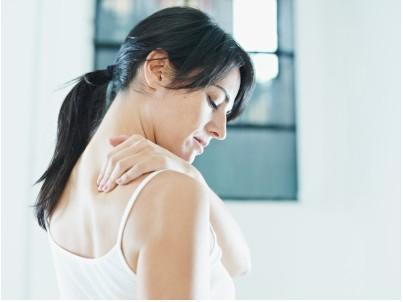Sports and fitness shoulder joints most vulnerable to injury
As people's health awareness increases, more and more people participate in the sport. However, shoulder joints are very vulnerable to injury. In particular , the incidence of rotator cuff tears is the highest. Treating them seriously and timely treatment after injury will not affect exercise ability and daily life.

   The most flexible shoulder
Multiple sports injuries
In all the joints of the human body, the shoulder joints are the most flexible, and many movements, such as strokes, playing, and the like, require several bones on the shoulders and their connected muscles, ligaments, and tendons to work together. Therefore, if people do not pay attention to protection during sports, the shoulder joints are easily injured. The intrinsic cause of the shoulder joint's vulnerability to movement is that its high degree of flexibility is at the expense of "sacrificing" certain stability. Some sports will cause shoulder joint damage if they exceed the limit of shoulder motion or overload the local load due to improper exercise. Tennis injuries , badminton , baseball , softball , squash , swimming, mountaineering, weightlifting , pull-ups, and gym strength training that are prone to shoulder joint injuries require upper limbs to move above the head. The shoulder injury caused by sports is mainly rotator cuff injury.
   Multiple rotator cuff injuries
Prevention is the most important
Injuries to the rotator cuff are more frequent in volleyball, gymnastics, and swimmers. For sports and fitness participants, if the exercise load on the shoulder is too heavy or the movement is excessive, it is also prone to happen. The common easy-to-damage movements are: throwing objects in too much force, such as baseball pitching; hand support when falling down; horizontal bars, turning shoulders in rings; sudden back stretching when lifting weights. But a common cause is muscle strain, which means that long-term, excessive use of the shoulder joint does not properly exercise and stretch the rotator cuff muscles.
The rotator cuff tear has special symptoms: recurrent or persistent shoulder pain; nighttime pain worsens, especially not sleeping sideways; muscle strength decreases, especially when trying to lift the upper arm; joint mobility may be affected limit.
In fitness training, the prevention of injuries is more important than treatment. The following three points require special attention:
1. Do a “warming-up†activity before starting the formal exercise, ie, doing the upper arm rotation slowly and controlfully, which can help stretch and exercise the rotator cuff muscles, and can effectively prevent rotator cuff injury.
2. During exercise, the athletes should pay attention to themselves, that is, consciously "feel" their own shoulder reactions; once there is pain and other bad feelings, they should attract attention and stop exercising, and then take the necessary protective measures or early treatment. .
3. Do not overdo exercise, especially exercise training in the gym. For example, after practicing pectoralis major and latissimus dorsi, it is not appropriate to perform more intense training on the shoulders. When tired, exercise is taboo.
   Rotator cuff 腱炎 common
Comprehensive treatment should be timely
The rotator cuff is divided into rotator cuffs and rotator cuff tears. Among them, the vast majority of rotator cuff injuries are rotator cuff tendonitis, which can be restored in time with comprehensive treatment, and rotator cuff tears require surgical treatment.
The treatment of rotator cuff tendonitis, especially early, is mainly to relieve pain and inflammation. Later, through physical and drug treatment, rehabilitation training to improve the general adaptability and control the power load, in order to promote the healing of damaged tissue and functional recovery. Of course, severe cases require surgical treatment.
   The first step: reduce pain and inflammation
Pain in patients with rotator cuff tendonitis is similar to the treatment of other soft tissue injuries . There are five main aspects: First, rest. If you want to exercise, it is better not to cause pain in the affected area. The second is ice. In the acute phase of pain or after each activity, apply ice for 15 minutes. The third is pressurization. As far as possible, the shoulder joints are pressurized and bandaged, and the shoulder joints can be protected with braces during the period of aggravation of the pain. The fourth is anti-inflammatory drug treatment. It should be noted that anti-inflammatory drugs do not promote tissue healing and recovery and must be used in conjunction with other treatments. Fifth, physical therapy. The application of microwaves, lasers, and high-voltage electrical stimulation can help reduce inflammation and pain and facilitate local recovery.
   Step 2: Promote healing and functional recovery of damaged tissue
The goal of recovery in patients with rotator cuff tendonitis is to promote the growth of blood vessels and fibroblasts, make collagen deposits, and promote scar maturation. The following four steps of treatment can be performed after the inflammation is controlled and the pain is relieved, i.e., about 1 to 3 weeks after the injury:
The first is rehabilitation exercise. Mainly low-intensity anti-resistance strength training, such as water exercises, local muscle exercises, etc., but it must be noted to avoid re-injury.
The second is high-voltage electrical stimulation. It can stimulate sensory nerves and motor nerves while also promoting blood circulation.
The third is to improve trunk aerobic exercise and the general adaptability of the body.
The fourth is to prevent the abuse of the injured area, that is, to avoid making it "burdened" in the activity.
Â
Black Kitchen Faucets,Kitchen Taps,Black Stainless Kitchen Faucet,Black Stainless Steel Kitchen Faucet
Kaiping Yufa Sanitary Ware Co.,ltd , https://www.jmyufafaucets.com